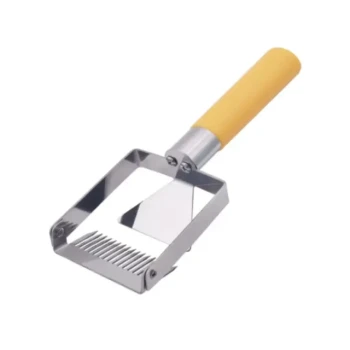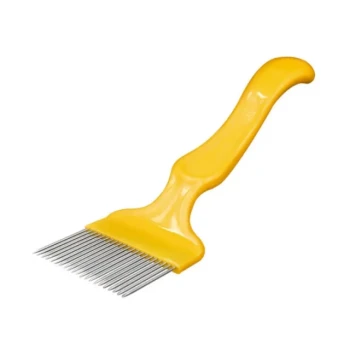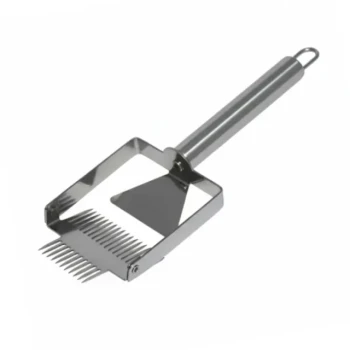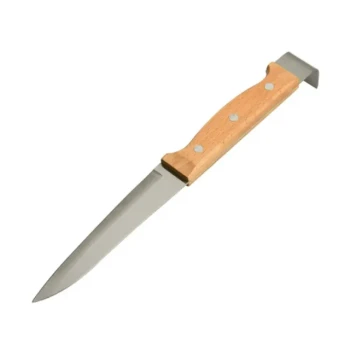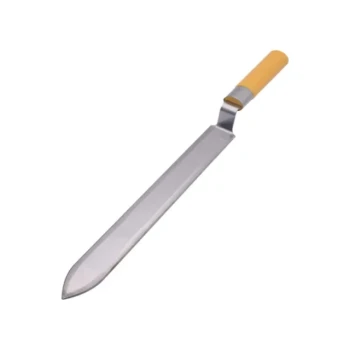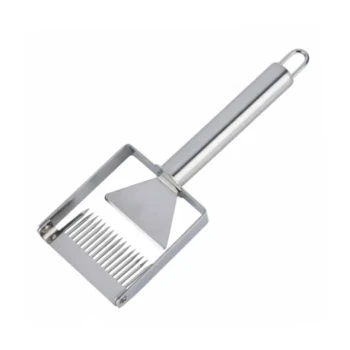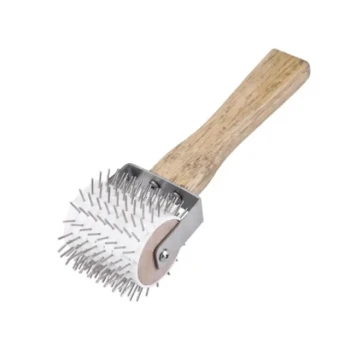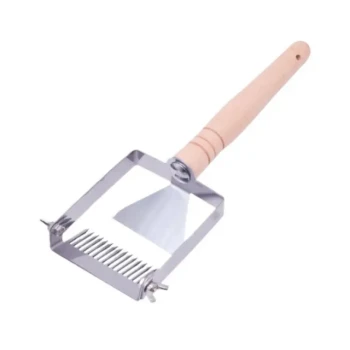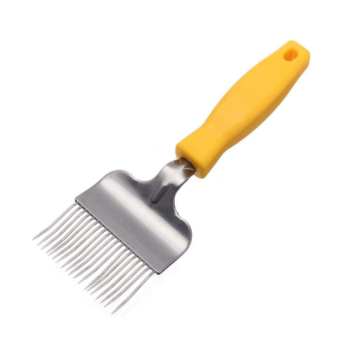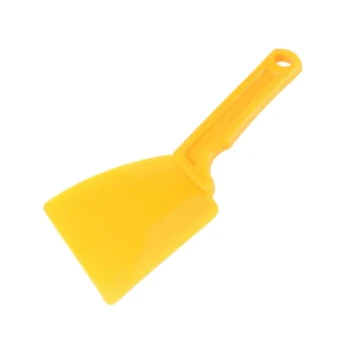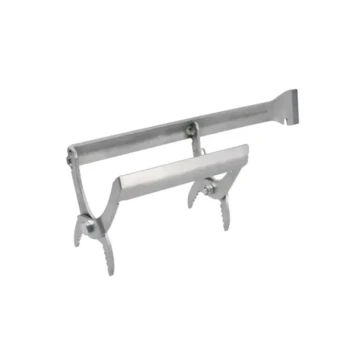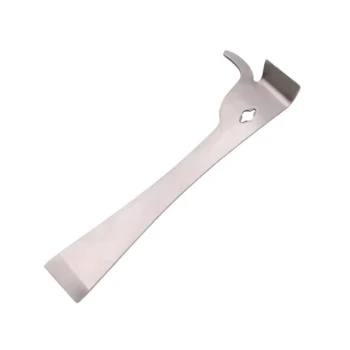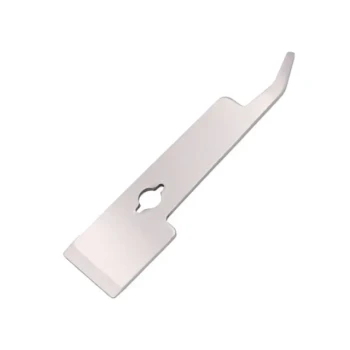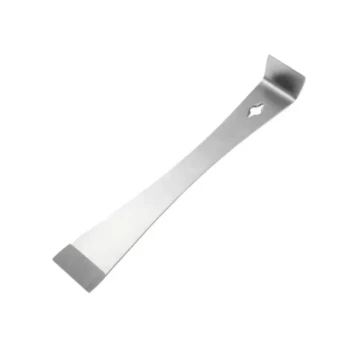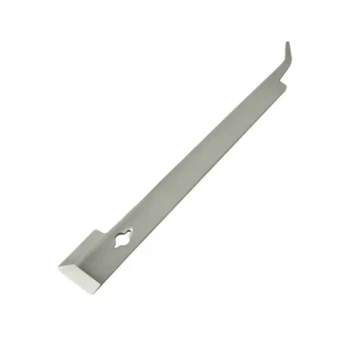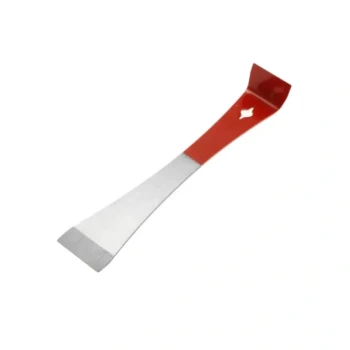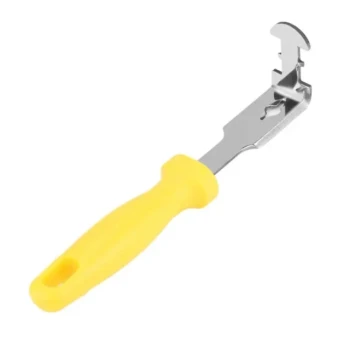The most effective practice for using plain uncapping knives is to work with two at once. You use one knife to slice the cappings while the other heats in a pot of hot water. When the active knife cools and begins to drag against the wax, you swap it for the hot one, creating a continuous and efficient workflow.
The core challenge of using a non-electric knife is maintaining a blade hot enough to melt, rather than tear, the wax cappings. The two-knife system is the simplest and most effective solution to maintain the momentum needed for a clean and efficient honey harvest.
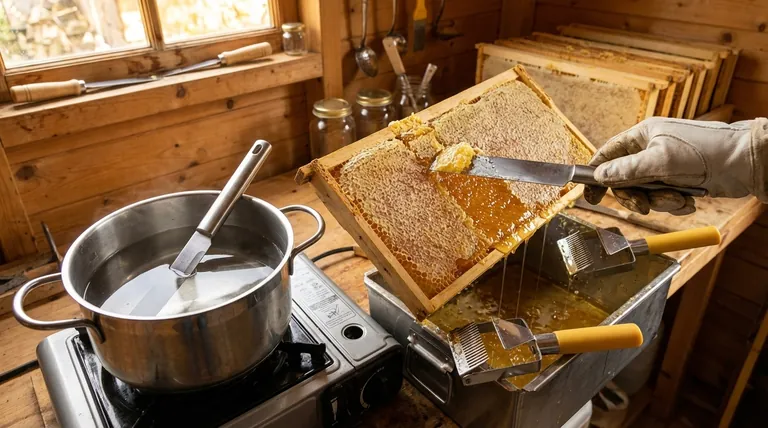
The Core Principle: Heat is Your Ally
The entire technique hinges on a simple principle: a hot blade slices through beeswax cleanly and with minimal effort.
Why a Hot Knife is Superior
A heated blade melts the wax just ahead of the cut. This allows the knife to glide smoothly through the cappings, creating a clean, uniform surface on the comb.
The Problem with a Cold Knife
A cold knife, even a very sharp one, relies on pure mechanical force. It tends to tear or rip the wax cappings, which can damage the underlying comb structure and leave a messy, jagged surface. This requires more physical effort and results in a less efficient extraction.
Executing the Two-Knife Technique
A successful harvest is about rhythm and preparation. Setting up your station correctly makes the entire process smoother.
Your Uncapping Station
You will need a pot of hot, but not boiling, water on a portable burner or nearby stove. Place it next to your uncapping tank or container where you will be working with the frames.
Have both of your plain knives ready. One starts in the hot water, and the other starts in your hand.
The Uncapping Motion
Hold the frame securely at a slight angle over your uncapping tank. Start your cut at the top of the frame and use a smooth, sawing motion to guide the hot knife down, letting the blade's heat do most of the work.
When to Swap Knives
You will feel the knife begin to drag and require more force as it cools. This is your cue.
Place the cooled knife into the hot water and pick up the second, fully heated knife. Continue your work without losing momentum. This swap becomes a natural part of the rhythm.
Optimizing Your Workflow
Efficiency isn't just about the tool; it's about the process surrounding it.
Work in Batches
Organize your supers so you can uncap a full batch of frames in one session. This allows you to get into a consistent rhythm, moving smoothly from one frame to the next without interruption.
Keep All Tools Within Reach
In addition to your knives and hot water, have your uncapping scratcher handy. This tool is essential for quickly dealing with low spots or missed areas on the comb that the knife can't reach.
Understanding the Trade-offs
While effective, the two-knife method has clear trade-offs compared to other options.
Simplicity vs. Speed
This method is simple, inexpensive, and highly reliable. It requires no electricity and the tools are easy to clean.
However, it is generally slower than using a dedicated electric uncapping knife, which maintains a constant temperature without needing to be swapped.
The "Cold Knife Only" Approach
Some beekeepers do use a single, unheated knife. While this is possible with a very sharp blade, it is almost always more difficult and less effective than using heat. It risks damaging more comb and is not recommended for achieving a clean, efficient result.
Making the Right Choice for Your Goal
Your ideal method depends on your scale and priorities.
- If your primary focus is low cost and simplicity: The two-knife hot water method is the definitive best practice and a major upgrade over using a single cold knife.
- If your primary focus is speed and efficiency for many hives: An electric uncapping knife may be a more suitable long-term investment to reduce processing time.
- If your primary focus is the cleanest possible cut: A properly heated plain knife gives you excellent control and delivers a pristine comb surface ready for extraction.
Mastering this simple two-knife technique empowers you to process your honey harvest efficiently with minimal investment.
Summary Table:
| Aspect | Cold Knife | Two-Knife Hot Water Method |
|---|---|---|
| Efficiency | Low (tears wax, requires more effort) | High (maintains workflow rhythm) |
| Comb Damage | High risk of damage | Minimal, clean cut |
| Cost & Simplicity | Simple but ineffective | Simple, reliable, low-cost |
| Best For | Not recommended | Beekeepers prioritizing cost-effectiveness and simplicity |
Upgrade Your Honey Harvest with Professional-Grade Equipment
Mastering the two-knife technique is the first step. For commercial apiaries and distributors, efficiency and reliability are paramount. HONESTBEE supplies the durable, high-performance beekeeping supplies and equipment you need to scale your operations. From uncapping knives to full extraction systems, our wholesale-focused solutions are built for the demands of serious beekeeping.
Let's discuss how we can support your business growth. Contact HONESTBEE today for wholesale inquiries and expert advice.
Visual Guide
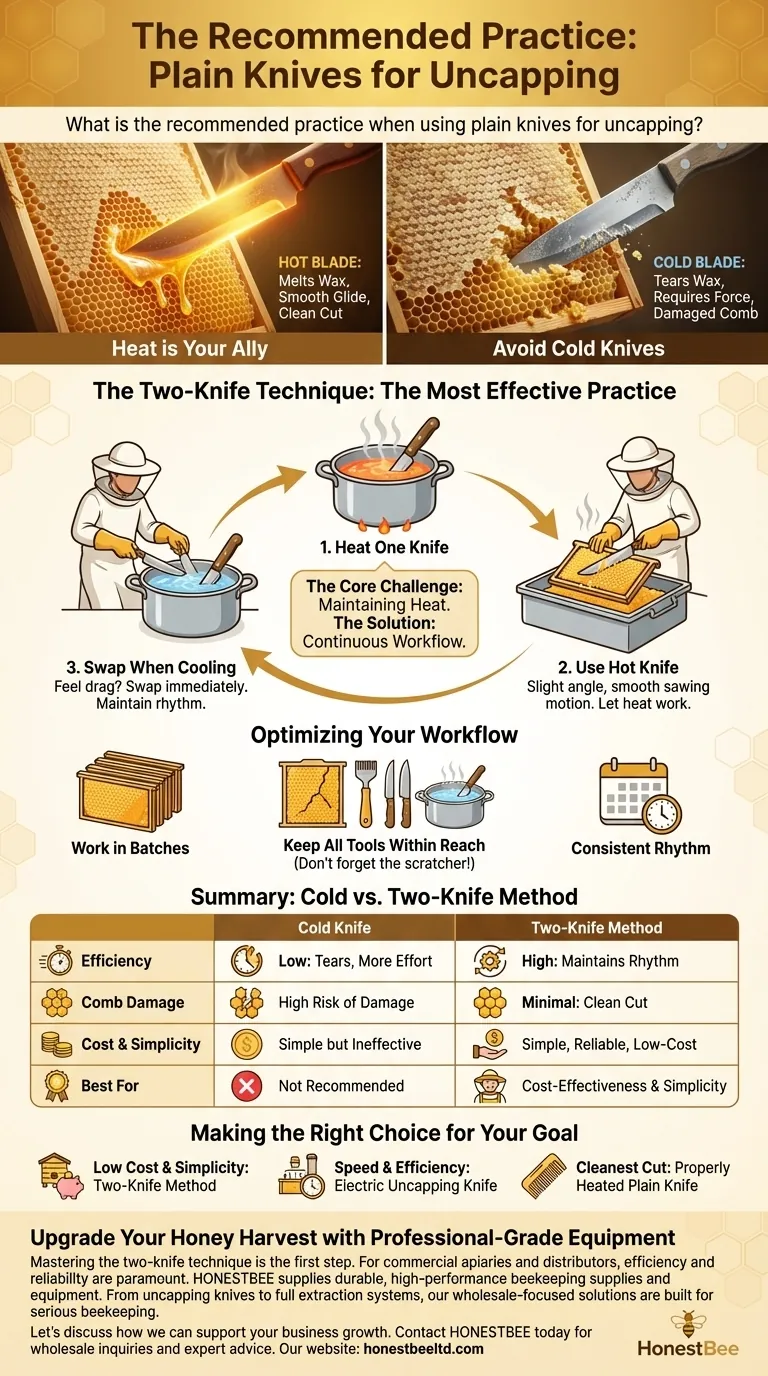
Related Products
- Stainless Steel Pivoting Honey Uncapping Fork with Plastic Handle
- Professional Honey Uncapping Fork Tool with Customizable Tine Options
- Stainless Steel Dual Blade Uncapping Plane
- All Stainless Steel Double Sided Pivoting Honey Uncapping Fork
- Professional Compact Multi-Function Uncapping Knife for Beekeeping
People Also Ask
- What to use to uncap honey? Choose the Right Tool for Your Apiary
- What is the best way to uncap honey? Find the Perfect Tool for Your Hives
- Why do you uncap honey? Unlock Your Harvest with Efficient Uncapping
- What is the primary use of an uncapping fork in beekeeping? A Guide to Precision Honey Harvesting
- What is the use of an uncapping fork? A Precision Tool for Hive Management and Honey Harvesting
